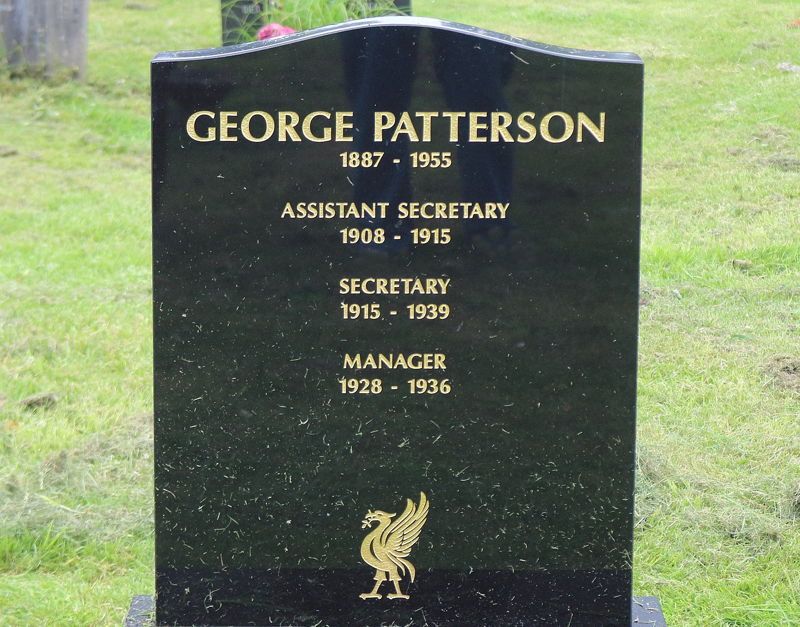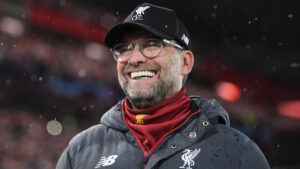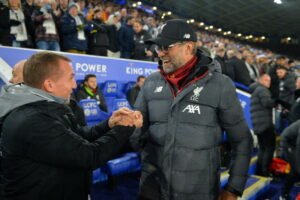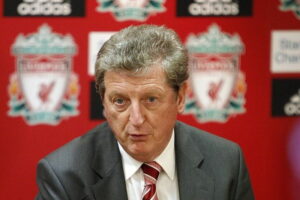
In the long list of Liverpool managers sits a name that many people won’t know much about, with other names like John McKenna and Bill Shankly far more likely to gain the accolades. That is understandable, considering what they achieved during their time at the club, but George Patterson is the many who signed up many of the first legendary players to wear the Red of Liverpool Football Club.
Born George Stanley Patterson in Liverpool 1887, he arrived at the club as an assistant to Tom Watson in 1908, the same year that the foundation stone was laid for what would go on to become the Liverpool Building on The Strand.
Though little was known of Patterson’s early years, we do know that he could have become Liverpool’s manager much earlier than he eventually did. He took the reigns when Watson died suddenly from pneumonia in 1915, with Britain involved in the First World War and top-level football limited.
Though he held the role for more than four years, it isn’t really considered to be a stint as manager on account of the fact that the Great War meant that not much football was played. He was brought in as manager in his own right after the departure of Matt McQueen in 1928, remaining in position for more than eight years.
Joining Liverpool
Unlike a lot of the managers of Liverpool Football Club, about whom we know quite a lot, there isn’t a huge amount to tell you about George Patterson’s more formative years. Even his date of birth isn’t totally certain, but we do know that he become a football player and spent most of his career playing for local side Marine.
Having been born in Liverpool and involved in football, it was perhaps somewhat inevitable that he was going to become involved with either Liverpool or Everton at some point. It was the team that played in Red that acquired his services, with Tom Watson bringing him on board as his assistant in 1908.
Back then, the role of manager as we understand it today didn’t exist. Instead, the title was ‘Club Secretary’, with the board being responsible for picking the team. Watson was a brilliant manager, helping Liverpool to win the Second Division before securing the first of two First Division titles in 1901.
If he wanted Patterson on board then it isn’t unreasonable to assume that it will have been for a reason. Patterson will no doubt have learnt plenty from Watson, which is probably why, when Watson died suddenly in 1915, it was Patterson to whom the board turned in the hope of some continuity in the Club Secretary position.
First Stint as Manager
Though the outbreak of the First World War had meant that top-flight football had all but ground to a halt in in the United Kingdom, there were still some inter-war competitions taking place and Liverpool were involved in them. As a result, someone needed to take on the role of guiding the club through them and Patterson was seen as the perfect person.
Though he was better known for his administrative work than anything else, he was charged with seeing the Reds through matches in competitions such as the Lancashire Section Principal Tournament and the Lancashire Section Supplementary Tournament, which he did in a steady fashion.
He fulfilled his role with suitable aplomb, remaining in position until David Ashworth came in as manager towards the end of December 1919. As far as the official record books go, the manager’s position was taken up by Tom Watson and then David Ashworth, but we know that George Patterson was definitely the Club Secretary for a period of time between the two of them.
It is likely that the fact that the First World War saw the Football League drawn to a close in an official capacity means that his work at the club during that period isn’t considered to be official, but that doesn’t mean that we’re going to completely ignore it.
Being Appointed Officially
Having dealt well with numerous challenges during the First World War, such as the complete lack of players available to Liverpool for matches, Patterson had improved his reputation by the time he stepped down in favour of David Ashworth. Not least of his achievements was the nurturing of some talented youth players, with Harry Chambers being top of that list.
Chambers would go on to play 339 times for Liverpool and score 151 times, being an important part of the club’s back-to-back titles in 1922 and 1923, all thanks to George Patterson giving him a start. Patterson had officially taken charge of 18 games, winning seven of them.
Though his first period of time as manager had been less than impressive, he wasn’t released altogether by the club when Ashworth arrived. Instead, he was moved back to more administrative duties, continuing doing that until he was once again asked to become manager. In the intervening years, Liverpool won two top-flight titles and were labelled the ‘Untouchables’ by the press, before seeing their superiority wane towards the end of the 1920s.
Ashworth departed in somewhat controversial fashion, with Matt McQueen being brought in to replace him before his own ill health got the better of him and Patterson was turned to once more.
#LfcManagers
5th Liverpool Manager
George Patterson
1928 to 1936 #FootballisLife @MyXOLO #BigLfcFan pic.twitter.com/3Uig9Ml82I— Shaurabh gami (@shaurabh_gami) April 23, 2014
The Reds were not in the best of form when McQueen left, but Patterson did just enough to keep them in the First Division at the end of the 1927-1928 campaign. Liverpool finished on 39 points alongside six other teams, meaning that it was Tottenham Hotspur and Middlesbrough that were relegated with 38 and 37 points respectively.
Even though Liverpool failed to win anything of note during his time in charge of the club, he was seen as a steady hand that allowed Liverpool to re-build. He resigned as manager in 1936, remaining in an administrative role before bowing out of football altogether in 1938.
A Fascinating Legacy
Given the immense success enjoyed by some Liverpool managers, you might well think that George Patterson’s time at the club is worthy of little more than a passing mention. In many ways, you’re probably right, but he was at the club for three decades and the Reds won almost everything there was to win during that time.
Given his administrative role for most of that, it would be churlish to suggest that he was nothing to do with what we won. One of the most important roles that he played was in squad development, having the ability to spot a talented youngster and working to ensure that they made their way through the ranks.
Former #LFC manager (1918-19 and 1928-36) George Patterson died on 23 April 1955 in Liverpool. He was 68 at that time. He led Liverpool FC in almost 400 official games.
Photo: George Patterson instructing his players in training during his 2nd spell with the club.#LFChistory_net pic.twitter.com/xv4B3tbWOz— LFChistory.net (@LFChistory) April 23, 2022
During his time at the club he helped sign the likes of Jack Balmer, Tom Bush, Berry Nieuwenhuys, Tom Cooper, Ernie Blenkinsop, Phil Taylor and Matt Busby, some of whom would be the early legends of Liverpool. Add to that his development of Harry Chambers and you can see why, at the very least, he should be remembered for his role in making Liverpool the club that it would go on to become.
He died in 1955, at which point he was still living close to Anfield on Skerries Road, and he was buried in the cemetery close to the stadium. There is no question that he was, at the very least, one of the men who helped to make Liverpool.



